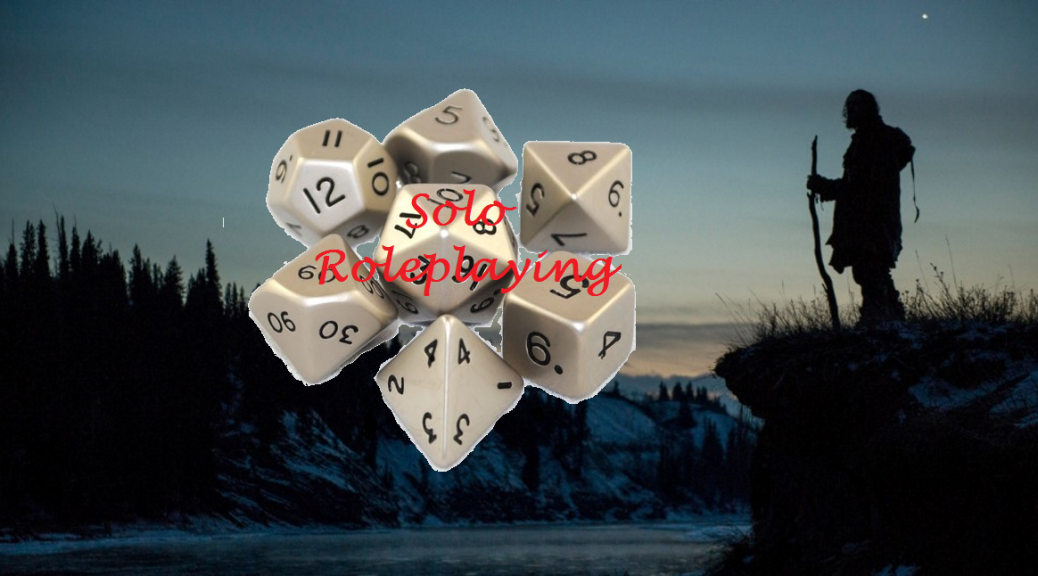Solo roleplaying may seem counter-intuitive to many. Playing an RPG solo instead of with a GM and other players. The idea goes way back to at least the late 1970’s, if not earlier. With the 1st Edition AD&D Dungeon Masters Guide, there are tables to generate random dungeons. One can use table to determine random encounters, NPC personalities, etc. Also in that time frame were the choose your own adventure books. The first computer RPGs were text based solo forays into dungeons or ruins.
Way back when, I tried to do solo play using the tables in the DMG, but did not have the patience for it. I have read other’s postings about their efforts in solo RPG play in recent years, and even follow the Lone Wolf Roleplaying G+ Community. Two people that I follow on G+ for other reasons, +Matt Jackson {G+ Deleted before archived.] for maps & RPG ideas, and +Sophia Brandt who does great reviews and gives a non-US take on RPGs.
Today, I am home sick with no voice, and I watched a Hangout hosted by +Ray Otus, with Sophia as special guest on the topic of solo RPGs. While watching this and hearing the different perspectives, and discussing ways to handle the GM piece of the puzzle, I felt inspired to try solo play again.
My Approach
Since AD&D 1e is my go to game, and I focus my blog on the OSR, I got to thinking about the tools available to me. Use the standard hexcrawl model. Town is safe and not the place of adventure. Maybe ask the barkeep or some other person in town where one can find adventure. Use the NPC personality traits tables to flesh out the NPCs to get an idea of how helpful or expensive their information might be. Then use the hexcrawl rules to determine the surrounding terrain and weather. The dungeon/ruins/source of adventure is a certain direction and so many miles/days from town. Use the chance of getting lost, and if the character(s) know they are lost. This would require having enough food, or ability to forage for food. Have random encounters, etc. The monster reaction table and morale tables would come in handy. Use the random dungeon tables to determine the entrance to the dungeon.
One could use different tools for decision making, such as Rory’s Story Cubes, decks of cards, the d30 Sandbox Companion, d30 GM Companion, GM Emulator, etc. There are also many solo play engines discussed at the Lone Wolf G+ Community. There are so many useful tables out there in the OSR, that you can take your favorites to build your own solo play method.
Hexcrawl Practice
I see this as one way for a GM to practice running a hexcrawl and finding the method that works best for them. One could even use solo hexcrawl play to build a sandbox for future group play. For example, use this to build the back story of your region in the starting hexcrawl. Something along the lines of How to Host a Dungeon. I’m not sure how well that would work in practice, but I see it as a way for a GM to be a player in their own world.
One of the other common uses of solo play is testing one’s own game, adventure, or custom classes, new monsters, or house rules. It would also be a good way to try out a new ruleset to make sure one knows it before group play.
You can roll dice, or use tools like NBOS’ Inspiration Pad, for quick results once your tables are built.
There are lots of free and low cost solo play engines. One could also use rules light systems like Swords & Wizardry Light or RISUS, or even FATE. As with all things RPG, find what works best for you. The only way to know is to try.


